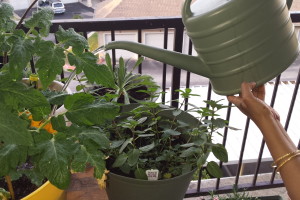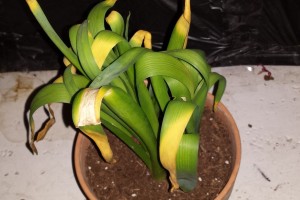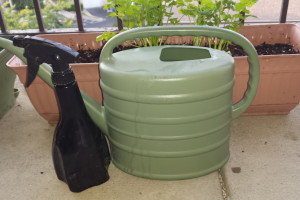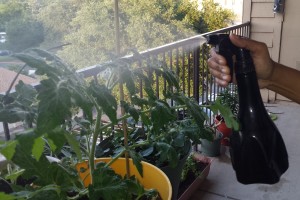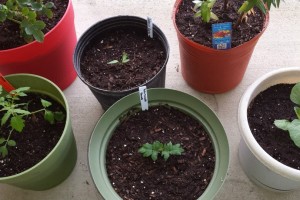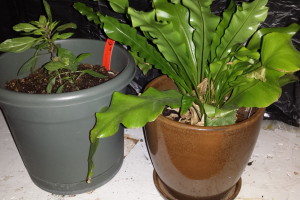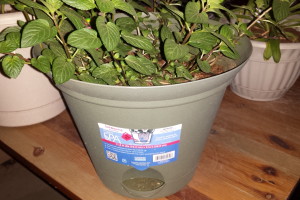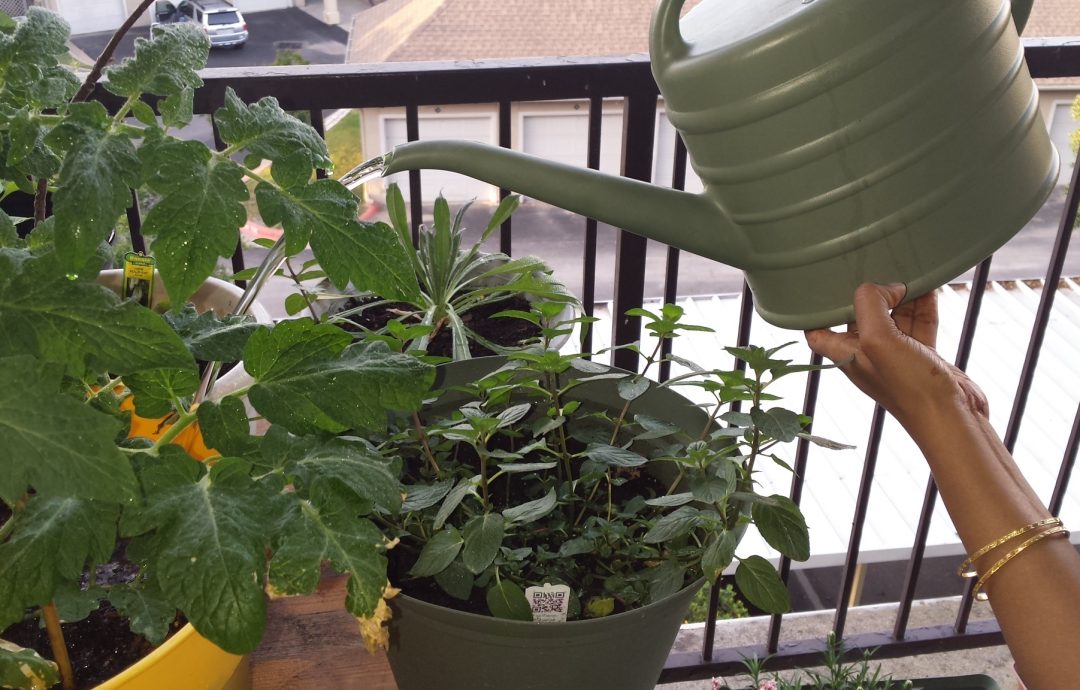
Overwatering Container Plants
On April 30, 2014 by Meghalee DasOverwatering is the most common mistake beginners make in container gardening. Since we do not have the luxury of a sprawling lawn, proper and timely watering is the trickiest part of sustaining a healthy container garden. We need to be extra careful and consider many factors like the size and composition of the pots, the type of soil and plants, the season, time of day and so on. Very often, we enthusiastically water our plants but do not ensure appropriate drainage. This can lead to many problems:
Root Rot: If we water our plants too frequently, the middle and bottom layers of the soil will remain damp, although the top soil looks dry. If there aren’t enough drainage holes, this water will accumulate over time and spoil the roots. You will notice that the leaves will turn yellow, then fall off and the stems will become limp. Once the roots start decaying, the plant will soon die.
Try saving it by gently taking out the plant from the soil, washing the roots under running water, cutting off the rotten parts of the roots and the yellow leaves, and re-pot it in fresh soil.
Fungus: Fungus grows and thrives in damp conditions. Overwatering and inadequate drainage, along with poor air circulation, keep the soil constantly wet. If there are spores and insect eggs already in the soil, this will lead to mushrooms and fungus gnats. Most mushrooms do not harm plants, but fungus gnats can feed on tender roots, and powdery mildew can destroy the leaves.
You can treat the plant by removing the affected parts and spraying it with a fungicide or a solution made by mixing 1 tbsp baking soda + 1 tsp mild liquid soap + 1 gallon water.
Nutrients/Fertilizers Flush: Regular overwatering can wash away natural soil nutrients, minerals and fertilizers, which are essential for keeping plants strong and disease-free. It also displaces oxygen in the soil and causes the roots to grow in the top layer only. This makes the plant weak and leads to leaf drop and root rot.
Do the foolproof finger test to avoid overwatering: Insert a finger into the soil up to your knuckle. If it feels damp and the soil looks dark, do not water, even if the top soil feels dry and looks light in color.
Here are a few things I keep in mind to ensure that I do not overwater my plants:
- Always buy pots which have at least one or more drainage holes.
- Avoid giving the plants small sips of water or frequent sprinklings. Shallow watering means shallow roots and dehydration.
- Water thoroughly till you see the water flow from the bottom of the pot. When all the layers of the soil remain hydrated, deep, strong roots start forming and you won’t even have to water frequently.
- During summer, water early in the morning.
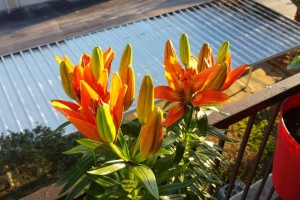
Later in the day, the water will become too hot and burn the tender shoots or leaf fibers. (My first knock-out rose plant died in one day because of this.) - You can spray some water on leafy plants with a spritz bottle. Again, remember never spritz under direct and full sun.
- Early morning watering allows the water to evaporate throughout the day and prevents diseases. Avoid splashing water on leaves and stems to prevent mildew and fungus.
- During hot summers, you may have to water your plants twice — early morning and early evening. During winter, water late morning, otherwise the soil surface will be too cold, and watering once every 3 days to 1 week is also acceptable then.
- Water more thoroughly and gently when you sow seeds to allow proper germination or when you plant/repot a young sapling to ease the shock they go through.
- Note what kind of pot you have. Water evaporates more quickly in clay and ceramic pots than plastic ones.
- If you travel a lot, get self-watering containers, where you pour water in the bottom cup and let the roots soak it naturally.
Gardening requires time, patience and care. But it is also very relaxing, and you develop a connection with your plants as they germinate and develop. Identifying and avoiding overwatering has been the biggest challenge I have faced in container gardening. I hope you find these tips useful and grow beautiful, healthy plants.

